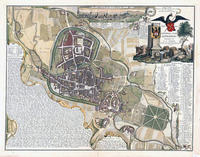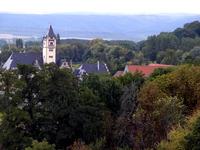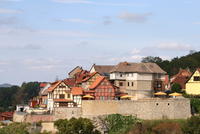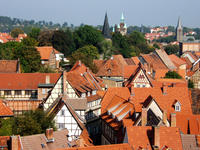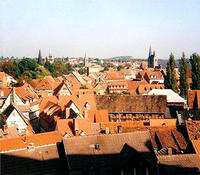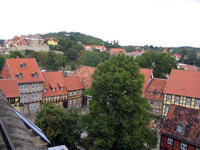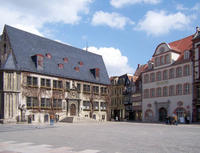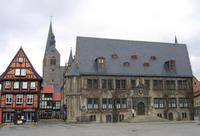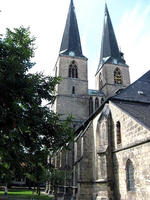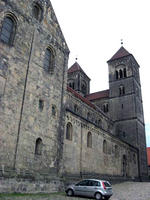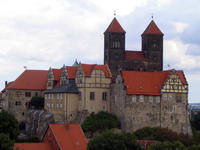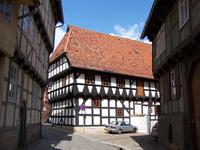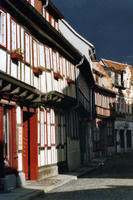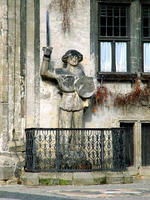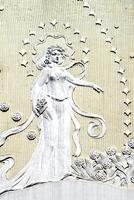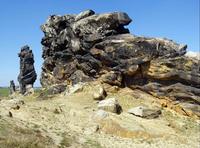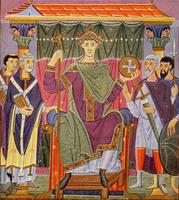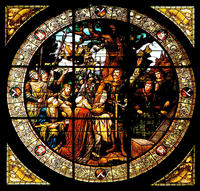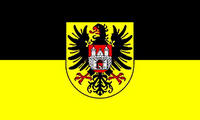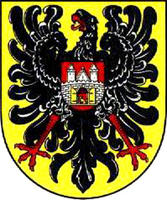Collegiate Church, Castle, and Old Town of Quedlinburg
Up to 75 images are shown here. Click on each for more details or on Image Gallery for more images.
Six official UN languages:
Arabic,
Chinese,
English,
French,
Russian,
Spanish
Other languages:
Croatian,
Czech,
Danish,
Dutch,
Esperanto,
Estonian,
Finnish,
German,
Italian,
Latin,
Norwegian-bokmål,
Polish,
Slovak,
Swedish,
Vietnamese,
Low German
| Description: |
Quedlinburg, located in the Land of Sachsen-Anhalt, used to be the capital of the East Franconian German Empire during the Saxonian-Ottonian ruling dynasty. Since the Middle Ages it has been a wealthy trading town. Quedlinburg is an outstanding example of a medieval European town, by way of its high number and quality of timber-framed buildings. The Collegiate Church of St Servatius is a Romanesque architectural masterpiece. --WHMNet paraphrase from the description at WHC Site, where additional information is available. |
| |
Quedlinburg is a town located north of the Harz mountains, in the district of Harz in the west of Saxony-Anhalt, Germany. In 1994 the old town was set on the UNESCO world heritage list. The city of Quedlinburg has existed since at least the early ninth century, when a settlement known as Gross Orden existed at the eastern bank of the river Bode. As such the city is first mentioned in 922, as part of a donation by Henry the Fowler. The records of this donation were collected at the abbey of Corvey. --Wikipedia. Text is available under the Creative Commons Attribution-ShareAlike License. |
| Source: |
http://whc.unesco.org/en/list/535 |
| Source2: |
http://whc.unesco.org/en/list/535/video |
| Reference: |
1. UNESCO World Heritage Center, Site Page. |
| |
|


 NHK World Heritage 100 series
NHK World Heritage 100 series


